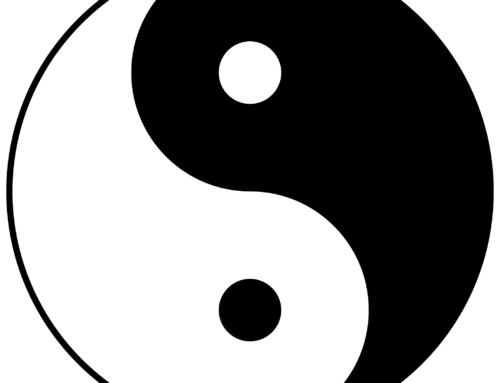The Korean Crisis: A Way Out
The ending of the US-Korea trade pact could pave the way for peace
by Justin Raimondo Posted on September 04, 2017
The latest North Korea nuclear test coincides with leaks from the Trump administration that Washington is demanding renegotiation of the US-Korea Free Trade Agreement (KORUS), and is preparing to withdraw from it – and therein lies a possible, albeit unintentional, resolution of the crisis on the peninsula.
The relationship between South Korea and the United States is unique in the history of empires. In the past, imperial powers have extracted resources from client states, protectorates, and outright colonies, setting up mercantilist arrangements that basically plundered their territories in the “Third World” for the benefit of domestic producers. The British empire is – or, rather, was – the exemplar of this system of exploitation.
Britain’s American cousins have stood this extractive system on its head. Instead of forcing open markets and granting monopoly status to domestic producers, the Americans have reversed the terms of exploitation. In exchange for allowing US troops to occupy their territory, America’s Asian protectorates have been granted tariff-free access to our markets. And despite the “free trade” label attached to these agreements, the playing field is anything but level: in the case of South Korea, for example, non-tariff barriers to trade – such as safety standards – have been allowed to stand, particularly in the case of automobiles and appliances. Similar disparities are encoded in our trade agreements with Japan.
And so the American empire is unique in world history in that, instead of economically exploiting its vassal states, it allows its vassals to protect their own industries behind trade barriers while they are given relatively free access to the US market. The result has been the hollowing out of the US industrial base, with once prosperous cities like Detroit in ruins. This isn’t “free trade” – it’s a trade policy distorted by militarism and imperialism.
Over 30,000 US troops now occupy the southern portion of the Korean peninsula. They have been there since the non-conclusion of the Korean war, which ended in a stalemate and an “armistice’ which continues to this day. We are still technically at war with the North.
The US presence in South Korea is increasingly resented by the populace. The reasons for this are rooted in history: in the past, the Americans served as backup for the succession of South Korean despots who ruled with an iron fist. With the emergence of democracy in the South, the US occupation has been increasingly controversial, with the more liberal elements – personified by the current South Korean president, Moon Jae-in – advocating rapprochement with the North and a loosening of ties to the US.
The so-called “Sunshine policy” – which was taken up by the South Koreans during the era of Kim Dae-jung, and was opposed by the administration of George W. Bush, and effectively sabotaged – resulted in an historic meeting between the leaders of the North and the South and the establishment of economic relations. President Moon won election by promising to renew this effort to reunify his sundered nation – and the demands by the US that the KORUS agreement be renegotiated may give him an opening to do so.
The Koreans are a proud and somewhat “xenophobic” people: they resent the presence of foreigner occupiers, and, given the history of US support for dictators like Syngman Rhee, Park Chung Hee, and Chun Doo Hwan, many see the US as a major part of the problem. In order to maintain the status quo, i.e. the US military occupation, successive South Korean regimes had to wrest economic concessions from Washington. After all, why should South Korean car manufacturers and farmers go along with having US troops on their soil without being bribed into passive acceptance?
Absent these bribes, the US occupation of South Korea is no longer operable, at least on the South Korean side. If the Trump administration severs the KORUS agreement, it will augur the decoupling of Seoul from Washington. And this is the key to peace on the peninsula.
The US military presence is the biggest obstacle to the resolution of the crisis, and, as the North ratchets up its nuclear program and prepares for what it sees as a coming military conflict with the US, that presence is increasingly problematic,. For as bombastic and seemingly intractable as Washington’s pronouncements on the subject may seem, US military leaders recognize that there is no military solution to the Korean conundrum. With the outbreak of hostilities, the entire population of Seoul – nearly ten million – would be put at risk. Millions would certainly perish. US casualties would be enormous. Such an outcome, no matter what the fate of the North Korean regime, is clearly unacceptable.
There is, in short, no military advantage in stationing US troops in South Korea: indeed, they are sitting ducks, fated to be sacrificed if war breaks out.
This has been true for some time: however, with the entry of the Trump administration onto the world stage, and the rapid development of North Korea’s military capacity, new factors are driving Seoul and Washington apart. President Trump’s nationalist proclivities when it comes to trade policy are unintentionally giving impetus to the decoupling trend. And the spectacle of North Korea standing up to the US – and China – is undoubtedly seen by many Koreans, no matter what their view of Kim Jong-un, as a source of national pride, while Trump’s increasingly belligerent pronouncements have not made him a popular figure. No one in the South wants war.
During the US presidential election, candidate Trump called the US guarantee of South Korea’s security into question: “[A]t some point,” he told the New York Times, “there is going to be a point at which we just can’t do this anymore. … at some point, we cannot be the policeman of the world.” He voiced the same complaint about Japan, whose relationship to the US limns US-Korea security and trade arrangements. While Trump’s advisors, who these days uphold the traditional Republican “police the globe” view of America’s role in the world, are up in arms over his threat to leave KORUS, his own “America First” nationalist views militate against maintaining the status quo – this despite his most recent outbursts.
The Korean standoff is the last of the cold war’s “frozen” conflicts: its persistence into the twenty-first century is a testament to the inflexibility of US foreign policy and the power of the War Party. But there is a cost to this unwillingness to adapt to the new reality: the possibility of a horrific war in which millions would perish.
If the KORUS agreement is severed, President Moon will be forced to re-engage with Pyongyang and fulfill his campaign promise to give the “Sunshine policy” a second chance. Left to themselves, Koreans on both sides of the 38th parallel will have to confront the issues that divide them, which are rooted in their own tumultuous history. In reality, this is the only path forward for South Korea.







Leave A Comment
You must be logged in to post a comment.